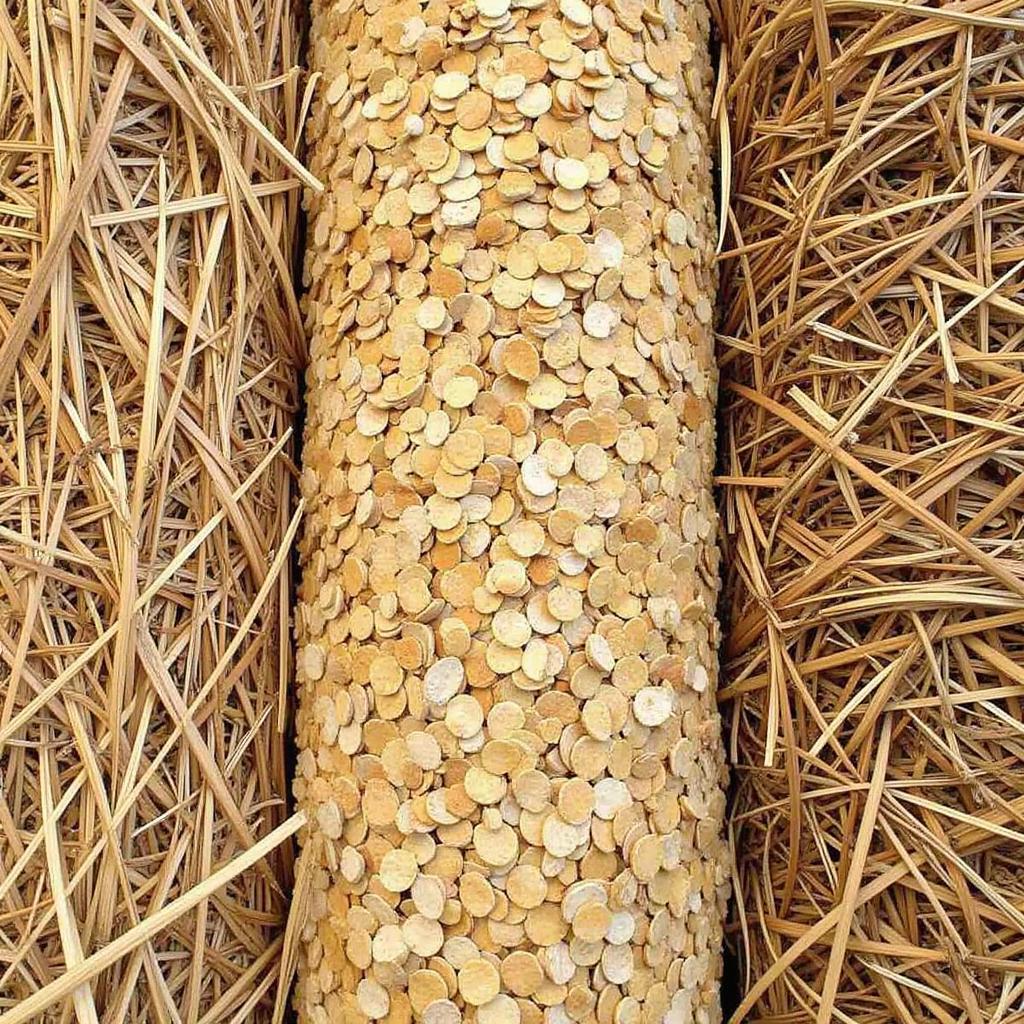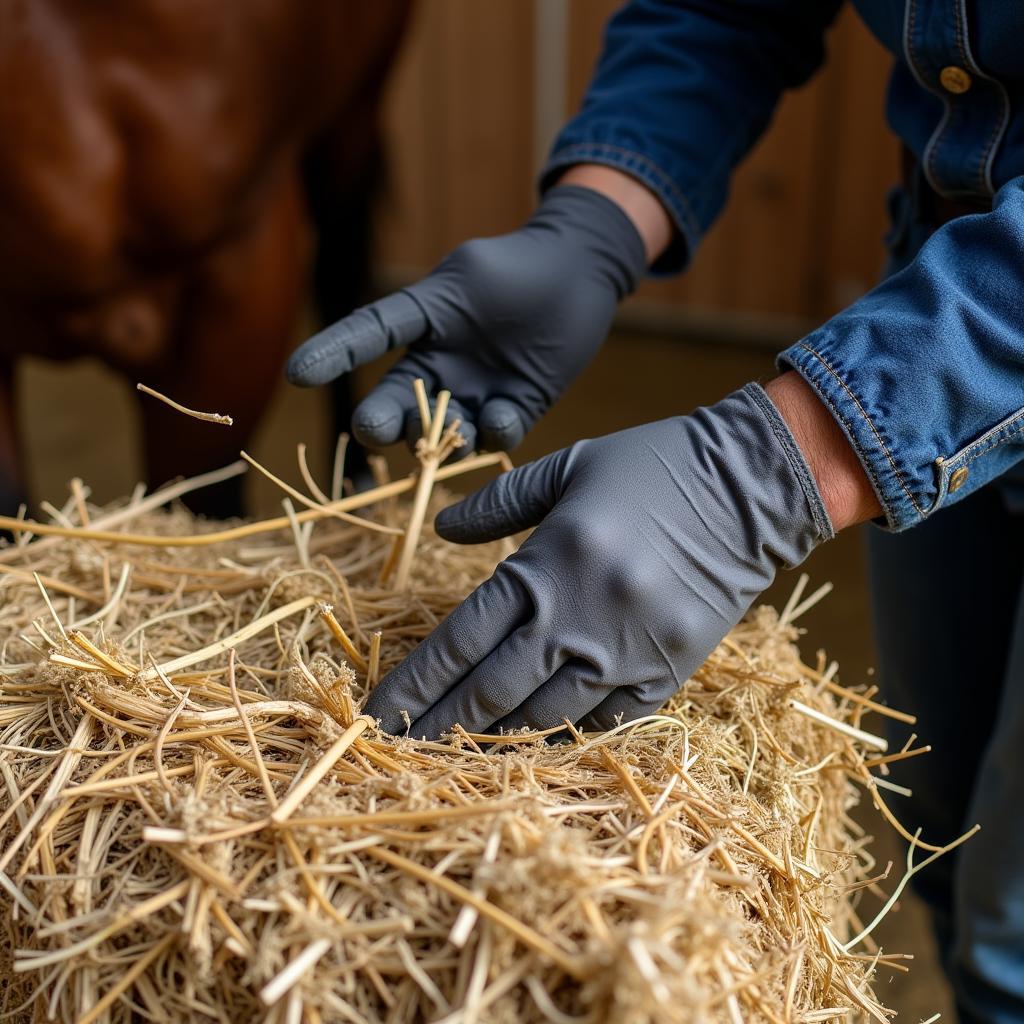Horse Straw Bedding is a popular choice for horse owners looking for a natural and affordable option. But is it the right choice for your horse? This comprehensive guide will cover everything you need to know about horse straw bedding, from its pros and cons to how to choose the right type for your horse.
Understanding the Appeal of Straw Bedding for Horses
Straw bedding offers several advantages that make it an attractive choice for many horse owners:
- Affordability: Straw is generally less expensive than other bedding materials, especially when purchased in bulk. This can be a significant advantage for horse owners on a budget.
- Natural & Biodegradable: Being a natural byproduct of grain harvesting, straw is environmentally friendly and decomposes easily, making disposal straightforward and environmentally responsible.
- Good Absorbency: Straw effectively absorbs moisture from urine and manure, helping to keep the stall drier and more hygienic.
- Familiar Scent: Horses are naturally accustomed to the smell of straw, which can be comforting and create a calming environment in the stable.
Types of Straw for Horse Bedding
 Bales of various straw types for horse bedding.
Bales of various straw types for horse bedding.
Not all straw is created equal. The most common types of straw used for horse bedding include:
- Wheat Straw: Known for its golden color and soft texture, wheat straw is a popular choice. It’s relatively absorbent but can be dusty, particularly if not sourced from a reputable supplier.
- Oat Straw: Softer and more palatable than wheat straw, oat straw is a good option for horses prone to respiratory issues. It’s also less likely to cause allergic reactions. However, it tends to be less absorbent and may need to be changed more frequently.
- Barley Straw: While readily available, barley straw is typically considered a lower-quality bedding option due to its stiff, prickly texture. It’s not as comfortable for horses to lie on and may not be as absorbent as other options.
Choosing the Right Straw Bedding: Factors to Consider
 Horse owner inspecting straw bale for quality.
Horse owner inspecting straw bale for quality.
Selecting the right straw bedding for your horse involves considering several factors:
- Your Horse’s Health: Horses with respiratory problems benefit from dust-free, low-allergen options like oat straw.
- Budget: Straw is generally budget-friendly, but prices can vary depending on the type of straw and availability in your area.
- Availability: The type of straw most readily available will depend on your location and the types of crops grown locally.
- Your Horse’s Preference: Some horses are picky about their bedding. Experimenting with different types can help you find what your horse prefers.
Straw Bedding Management: Tips for a Healthy Stable
- Start with a Clean Stall: Before adding fresh straw bedding, ensure the stall is thoroughly cleaned and disinfected.
- Provide Adequate Bedding Depth: Aim for a depth of 6-8 inches to provide adequate cushioning and absorbency.
- Remove Wet Spots Daily: Remove manure and wet spots daily to maintain hygiene and prevent ammonia buildup.
- Add Fresh Bedding Regularly: Depending on the type of straw and your horse’s habits, you’ll need to add fresh bedding every few days or weekly.
- Store Straw Properly: Keep straw dry and well-ventilated to prevent mold and mildew growth.
Alternatives to Straw Bedding
While straw is a popular choice, other horse bedding options exist, including:
- Horse pellets for bedding: Made from compressed wood or paper, pellets offer excellent absorbency and are often more economical in the long run.
- Shavings: Wood shavings, particularly those from pine or aspen, are another common bedding material. They provide good cushioning and are relatively dust-free.
FAQs About Horse Straw Bedding
Q: Will horses eat straw bedding?
A: While horses may nibble on straw, it’s not a suitable substitute for hay. To learn more about this, read our article about will horses eat straw.
Q: How much straw does a horse need for bedding?
A: The amount of straw required varies, but a good starting point is one to two bales per week.
Q: Can I compost horse straw bedding?
A: Yes, straw bedding can be composted along with manure.
Q: Where can I buy horse straw bedding?
A: Local feed stores, farm supply stores, and online retailers often carry horse straw bedding.
Conclusion: Making an Informed Choice About Horse Bedding
Horse straw bedding is a classic choice for many horse owners, offering a balance of affordability, natural comfort, and ease of disposal. However, choosing the right type of straw and managing it effectively is crucial for maintaining a healthy and comfortable stall for your horse. By understanding the different aspects of horse bedding straw, you can make an informed decision that meets your horse’s needs and your budget. For a comprehensive list of essential horse supplies, check out our horse tack list.
Need help with your horse product choices? Contact us! Our team at Justus Horses USA is here to provide expert advice and support. Call us at 0772127271, email us at [email protected], or visit our location at QGM2+WX2, Vị Trung, Vị Thuỷ, Hậu Giang, Việt Nam. We offer 24/7 customer service.